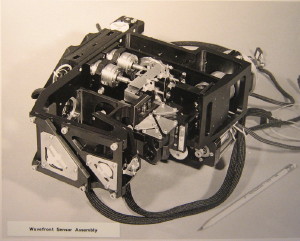
Smaller than a shoebox, this assembly carries two drive motors, a lenslet array, an acoustic membrane mirror, video feed, toroidal mirrors, and other optics. It maps wavefront curvature by comparing sliced planes from either side of the pupil plane. This information is processed and forms the real-time inputs to both a steering mirror and a deformable mirror. The system is in service at the Canada France Hawaii 3.6m Telescope. When commissioned, the AO system produced 0.1 arcsecond imaging, about one magnitude improvement to what was already the best perfoming telescope in the world.
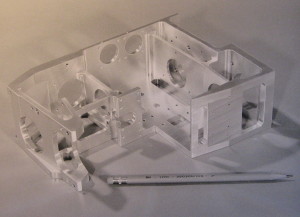
The central component was hogged from 6061-T6. All structural webs also serve as mounting planes, for reasons explained by the harmonic power spectrum (next photo).
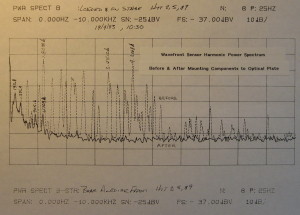
By ensuring that all structural webs in the hogout have simultaneous roles as component mounting planes, the final assembly is free of large-amplitude harmonics through to extremely high frequencies. The diagram shows the harmonic power (response) spectrum for the hogout before and after the components were mounted. All of the peaks shown in the free part are entirely damped in the final assembly without any need for post-assembly tuning. The significance here is that vibration sources, such as stepper motors and the deformable mirror, are free to operate at frequencies dictated by operations.

The photo shows one of the many on-board optical assemblies (left) and its drive motor (right). These devices are index-and-step controlled.
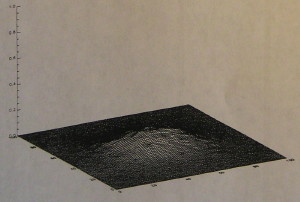
Without adaptive optics, the signal (the star light) is spread out and lost within the background noise.
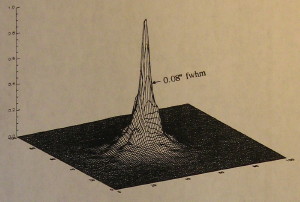
With the system engaged, the light from the object is no longer spread out, but rather it is concentrated into a tight guassian. The spike rises above the background noise and the object becomes detectable.